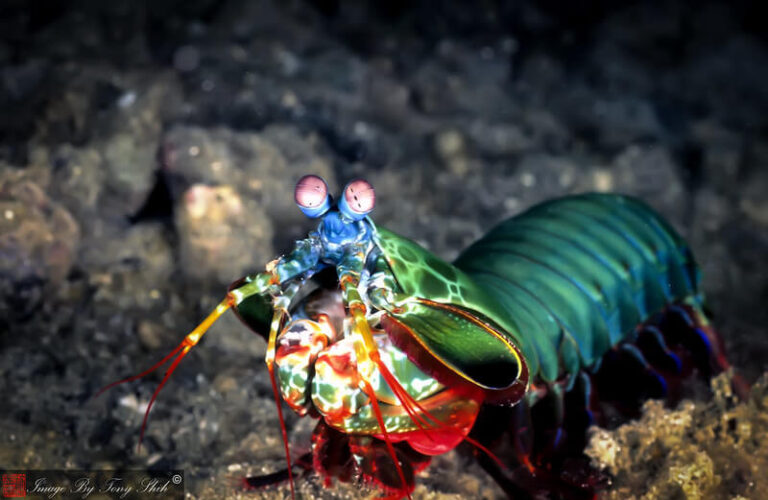Zigzag Eel: Care, Habitat, Behavior & Conservation Insights
The Zigzag Eel, also known as Mastacembelus armatus or the Tire Track Eel, is a fascinating freshwater fish that has captivated aquarists and wildlife enthusiasts. Native to various parts of South and Southeast Asia, this eel-like species is renowned for its unique appearance and intriguing behavior. Its distinct zigzag patterns, nocturnal nature, and predatory instincts make it a subject of great interest.
In this article, we’ll dive deep into the Zigzag Eel’s scientific classification, physical traits, habitat, behavior, diet, reproduction, threats, and its relationship with humans.
Contents
Scientific Classification
- Kingdom: Animalia
- Phylum: Chordata
- Class: Actinopterygii
- Order: Synbranchiformes
- Family: Mastacembelidae
- Genus: Mastacembelus
- Species: Mastacembelus armatus
Physical Characteristics

The Zigzag Eel has a slender, elongated body resembling that of true eels, though it belongs to a different family. Its body is marked by intricate zigzag or reticulated patterns, primarily on its dorsal side, contributing to its name. It can grow up to 91 cm (36 inches) in the wild, though it usually maxes out at around 51 cm (20 inches) in captivity. Their coloring is typically brown with lighter shades on the belly, and they possess a snake-like appearance with no pelvic fins. The dorsal fin extends along the body and is adorned with spines.
Habitat and Distribution
Zigzag Eels are native to the river systems of India, Bangladesh, Sri Lanka, Thailand, and Vietnam, among other parts of Southeast Asia. They thrive in diverse freshwater environments, including rivers, lakes, marshes, and floodplain areas. These eels are especially adaptable, found in fast-flowing streams and still waters with sandy or rocky substrates and dense vegetation. During tropical floods, they migrate to floodplains and wetlands to forage and breed.
Behavior
Zigzag Eels are nocturnal predators, spending most of their daytime hidden in substrate or plant roots. They are burrowers, often digging into the soft riverbeds or aquarium sand to remain concealed. In the wild, their behavior changes with the seasons, becoming more active during the warm tropical summer months. While generally peaceful, they can exhibit aggression toward members of their species, especially in captivity.
Diet
As carnivores, Zigzag Eels primarily feed on small aquatic organisms such as insect larvae, worms, and small fish. They are benthic feeders, foraging along the bottom for food. In captivity, their diet should be supplemented with live or frozen foods like bloodworms, brine shrimp, and tubifex worms. Though they prefer live prey, they can also be trained to accept high-quality pellets and frozen foods.
Reproduction
Not much is known about the breeding habits of the Zigzag Eel in the wild, but in captivity, breeding attempts have largely been unsuccessful. Females are typically more robust than males, especially when they reach sexual maturity. During spawning, females can lay several thousand eggs in aquatic vegetation, although successful hatching is rarely observed in aquariums.
Predators and Threats
Zigzag Eels face predation from larger fish species, aquatic reptiles, and birds in the wild. Humans also harvest them in certain regions as a source of protein. Habitat loss and water pollution pose additional threats to their populations, though they are not currently listed as endangered.
Conservation Status
As of now, the Zigzag Eel is not considered endangered. However, like many freshwater species, it faces habitat destruction, pollution, and overfishing threats in certain areas. Conservation efforts aimed at preserving freshwater habitats would likely benefit their populations.
Interesting Facts
- Despite their eel-like appearance, Zigzag Eels are not true eels; they belong to the Mastacembelidae family.
- They are skilled burrowers and can often hide in soft substrates or vegetation.
- The Zigzag Eel’s complex patterning helps it blend into its environment, offering camouflage from predators and prey.
Evolutionary History
Zigzag Eels are part of an ancient lineage of fish that have adapted to thrive in freshwater habitats. Their unique physical adaptations, such as elongated bodies and spiny dorsal fins, have helped them survive in various ecological niches. The evolutionary pressures of predation and resource competition have shaped them into stealthy, nocturnal hunters.
Relationship with Humans
Zigzag Eels are popular in the aquarium trade due to their striking appearance and unusual behavior. However, their large size and specific care requirements mean they are best suited for experienced aquarists. In some parts of Asia, they are also used as a food source. Maintaining proper water conditions and diet is essential for their well-being in captivity, where they can live for many years if cared for properly.
FAQs About Zigzag Eels
Are Zigzag Eels Aggressive?
Zigzag Eels can show aggression towards their species, particularly in confined spaces. However, they are generally peaceful when housed with similarly sized fish in community tanks.
How Big Does a Zigzag Eel Get?
In the wild, Zigzag Eels can grow up to 91 cm (36 inches), but in captivity, they typically reach around 51 cm (20 inches).
What is the Common Name of Zigzag Eel?
Common names include Tire Track Eel, Marbled Spiny Eel, and Leopard Spiny Eel.
How Do You Take Care of a Zigzag Eel?
To care for a Zigzag Eel, provide a spacious aquarium with a soft substrate for burrowing and maintain water conditions with a pH between 6-8 and temperatures of 23-27°C. Offer a diet rich in live or frozen foods like bloodworms and brine shrimp.
Conclusion
The Zigzag Eel is a captivating species that offers a blend of beauty and complexity in its behavior and habitat preferences. Whether admired for its unique patterns or kept in aquariums, this species intrigues biologists and hobbyists alike. By ensuring the conservation of their natural habitats and understanding their needs in captivity, we can help preserve these fascinating creatures for future generations.
- Golden Retriever Pros and Cons: What Every Pet Parent Should Know - 15 September 2025
- Cane Corso Dog Breed: Health, Care, and Lifespan - 14 September 2025
- Catahoula Leopard Dogs: Description, Temperament, Lifespan, & Facts - 21 July 2025







